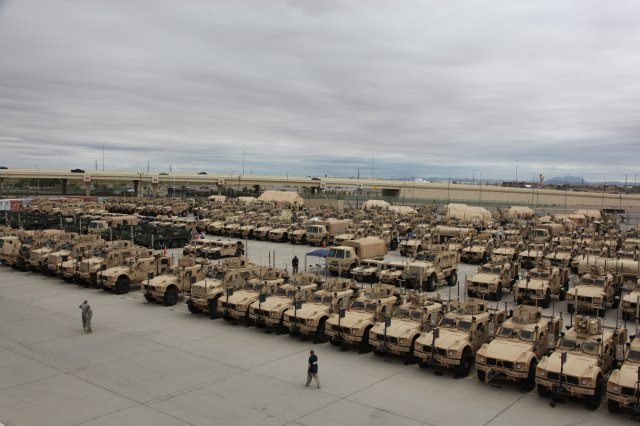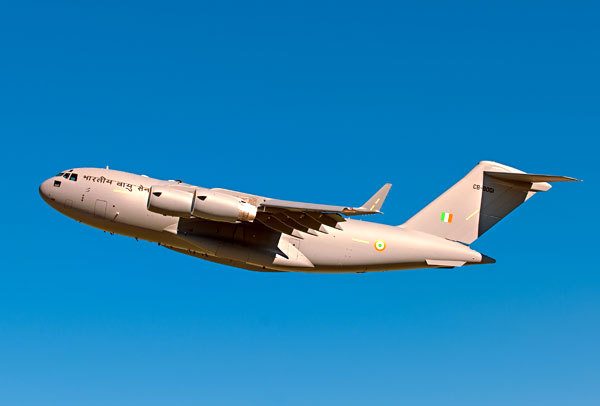As Soldiers prepare to deploy with the Army’s new tactical communications network later this year, Army engineers are stretching the equipment to its limits to ensure it can support complex, on-the-move operations and extend the range of communications to the farthest edges of the battlefield.
The Network Verification event for Capability Set 13, or CS 13, is a technical test that runs the systems through realistic operational threads in order to validate configurations specific to two brigade combat teams, known as BCTs, of the 10th Mountain Division, who are now training on the equipment in advance of their deployment. It is the final check-out for CS 13, coming on top of the Network Integration Evaluations, or NIEs, that shaped the capability set, as well as the safety release and safety confirmation testing that cleared new networked vehicles for use in training and in theater.
“We’re taking an extra step because we realize the magnitude of the integration effort,” said Robert Puhalla, synchronized fielding test lead, Army System of Systems Engineering and Integration Directorate. “This event gives us added confidence in the final combined product, knowing that the platforms coming off the production line operate as a fully integrated system of systems.”
CS 13 is the Army’s first integrated communications package that spans the entire BCT formation, connecting the fixed tactical operations center to the commander on-the-move to the dismounted Soldier. The network is designed to help deployed units cover greater distances, make quicker decisions and share more information across more echelons than is possible in today’s operational force.
“That capability is not just with the division commander — that capability is all the way down to the Soldier,” said Col. Mark Elliott, director of the Army G-3/5/7 LandWarNet-Mission Command Directorate. “We are also giving units equipment that has been integrated up front, so they don’t have to worry about it.”
Network Verification, which is being conducted this month at the Fort Dix, N.J., field laboratories and facilities of the U.S. Army Communications-Electronics Research, Development and Engineering Center, or CERDEC, is using more than a dozen mine-resistant, ambush-protected vehicles, known as MRAPs, recently integrated at the Space and Naval Warfare, or SPAWAR, Systems Center Atlantic in Charleston, S.C., to create a representative “slice” of the Capability Set 13 architecture. Through instrumentation and human data collectors seated in the vehicles, the Army Test and Evaluation Command is measuring network traffic and performance — such as timely delivery of messages, orders and unit locations — across various distances and terrain obstructions.
There are also representative brigade, battalion and company command posts equipped with the CS 13 network backbone, radios, software and other systems found at each echelon. The goal is to confirm that the network architecture for the 10th Mountain Division BCTs can support a range of scenarios at each level and across the BCT, said Network Verification test director Joseph Kobsar, deputy director for CERDEC’s Product Director C4ISR Network Modernization. C4ISR stands for Command, Control, Communications, Computers, Intelligence, Surveillance and Reconnaissance.
“We’re leveraging the unique capabilities and infrastructure of our facilities at Joint Base McGuire-Dix-Lakehurst (N.J.) to support this mission, which is to verify that CS 13 does indeed provide a robust and flexible methodology for tailoring communication capabilities to address challenges that commanders often face,” Kobsar said.
These final check-outs come on top of the NIEs, a series of rigorous field exercises leveraging 3,800 Soldiers of the 2nd Brigade, 1st Armored Division, executing missions in the mountains and desert of White Sands Missile Range, N.M. The NIEs validated the makeup of the CS 13 network, and also produced Soldier feedback that was incorporated into CS 13 MRAP vehicle designs built at SPAWAR and delivered to the 10th Mountain Division.
There are multiple unique vehicle configuration types, which correspond to the numerous unique roles within a BCT and take into account the need for different combinations of communications systems, along with size, weight and power constraints.
Given that complexity, the Army is doing its “due diligence” by measuring the final integrated product through specific technical checkouts at Joint Base McGuire-Dix-Lakehurst, Puhalla said.
“There are a number of improvements made since the NIE, as well as network configurations specific to the makeup of the 10th Mountain Division,” said Col. Rob Carpenter, Army director of System of Systems Integration. “Network Verification is part of our continuous assessment and improvement of the tactical network.”











